Baked salmon is a great dish add to your weeknight meal rotation. Salmon is easy to find, quick to cook, hearty and nutritious. And let’s not forget that there are endless ways to prepare it! This recipe serves as a beautiful base. All you need is a salmon side dish or a contest-winning salad recipe to complete the meal.
Read on to learn all the baked salmon basics, from finding the right fillet to fish preparation and storage, plus some ideas for making the recipe your own. In no time at all, you’ll have a delicious salmon meal on the table, ready to be devoured by everyone!
Ingredients for Baked Salmon
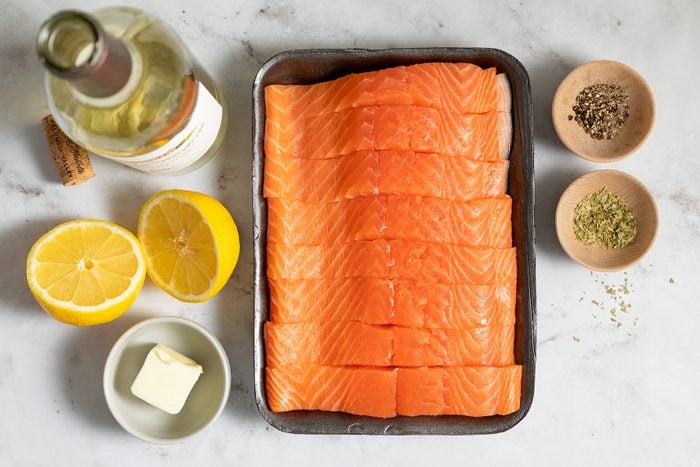
- Salmon fillet: Salmon is a hearty, wholesome protein entree, rich in both flavor and omega-3 fatty acids. There are a few types of salmon to choose from, but Atlantic and sockeye are our favorites for baking.
- Butter: Brushing the salmon with butter adds a rich, savory flavor to the fish as it bakes. It also helps keep the fish moist as it cooks in the dry heat.
- White wine or chicken broth: Use whichever you prefer here. White wine adds a subtle acidity and enhances the natural flavors of the salmon, while chicken broth adds a savory, rich flavor.
- Lemon juice: The saltiness of the salmon and the acid of the lemon balance one another. The citric acid in lemons also helps to break down the proteins in salmon, making it even more tender and flavorful.
- Dried tarragon: Tarragon has a distinctive yet subtle licorice taste that complements the saline flavors of salmon.
Directions
Step 1: Prepare the salmon
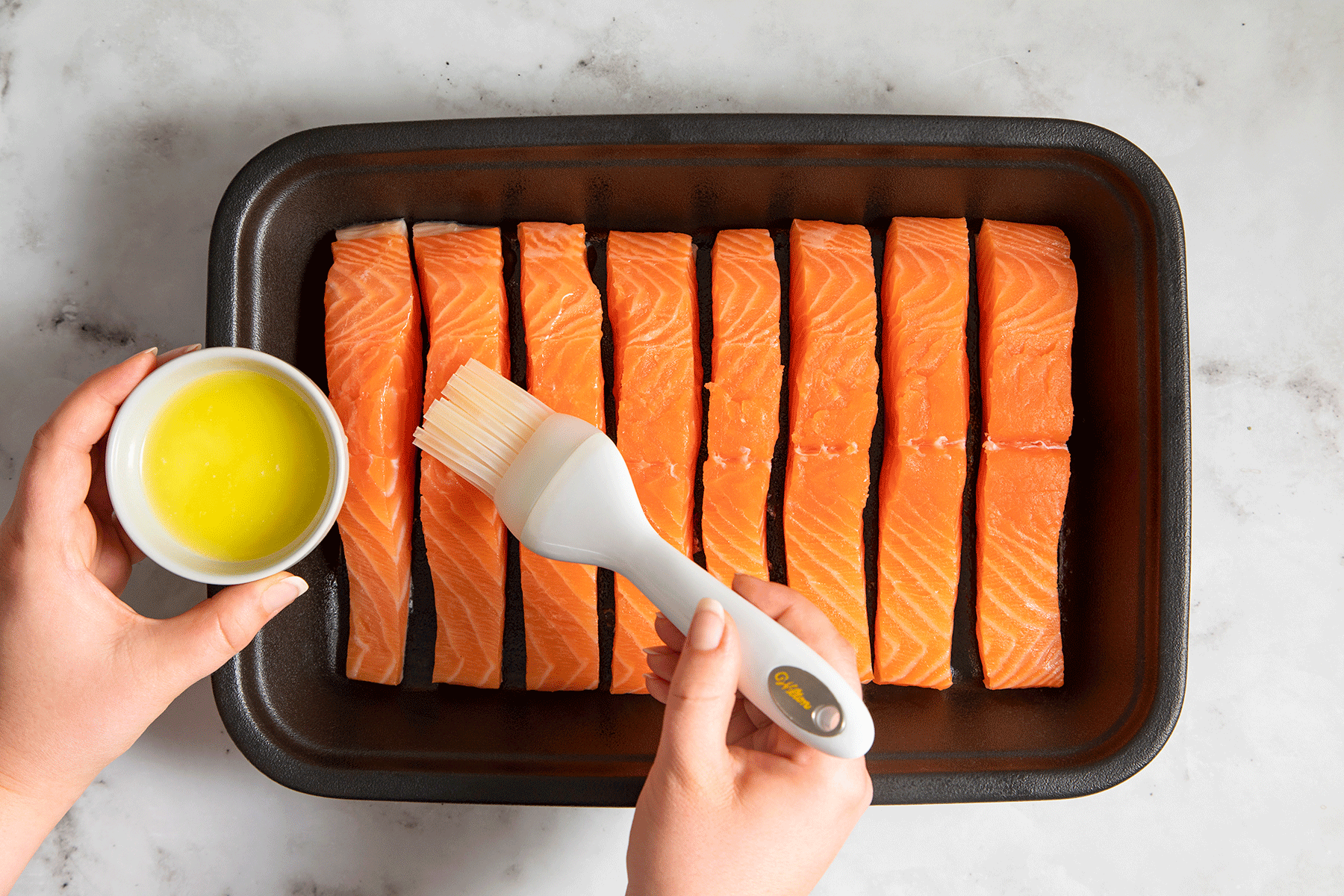
Preheat the oven to 425°F. Pat the salmon dry. Cut the fillet crosswise into 8 pieces if desired. Place the salmon in a greased 13×9-inch baking dish. Brush evenly with butter. Stir together the white wine or chicken broth, lemon juice, pepper and tarragon in a bowl. Pour over the salmon.
Step 2: Cook the salmon
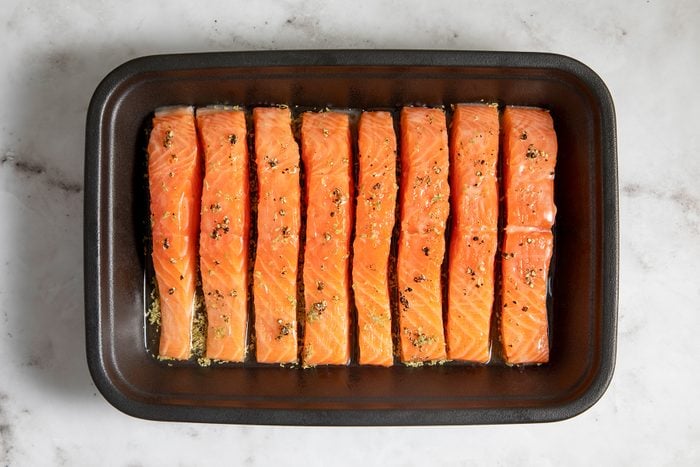
Bake the salmon, uncovered, for 15 to 20 minutes, just until the fish becomes flaky when you pierce it with a fork.
Editor’s Tip: It can sometimes be difficult to tell whether salmon has finished cooking. There are two ways to help you. First, check the temperature at the center of the fillet with a meat thermometer, which should read at least 145º. The second way is to check the color of the salmon. The fillet should be opaque and have a pink or orange color. It should no longer be translucent.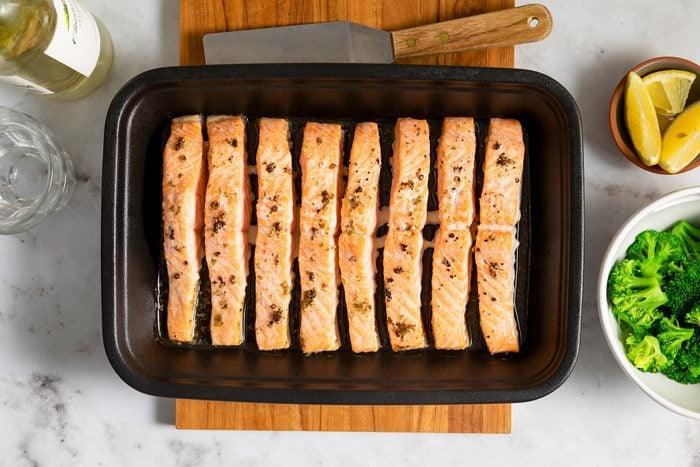
Recipe Variations
- Add your favorite spices: Bake a salmon that suits your tastes. Adding chili powder, paprika, garlic powder, dried parsley flakes or ground cumin can offer an entirely different dimension.
- Garnish with fresh herbs and veggies: Top your baked salmon with functional, practical garnishes, such as fresh dill or sauteed vegetables. This will introduce more flavor and texture to the dish. It will also give the dish an elegance you’d find in a restaurant meal.
- Make it a one-pan dinner: Serve this salmon as a sheet pan dinner. Rather than cooking it in a baking dish, use a baking sheet. Surround the salmon fillet with asparagus spears, broccoli and cauliflower florets, sliced zucchini, and other bright, flavorful vegetables.
- Serve it rice-bowl style: Serve this as a salmon bowl over a bed of rice, farro or quinoa, then add colorful ingredients like roasted vegetables, pickled onions, chopped cilantro or parsley, and a drizzle of tahini or teriyaki sauce.
How do you store baked salmon?
Do not leave salmon at room temperature for longer than two hours. Pack the fish in an airtight container, and place it in the coldest part of the refrigerator so that it will stay fresh. It will keep in the fridge for two or three days. (Note: If your raw fish was in the refrigerator for a few days or was thawed more than once from the freezer, it may not be safe to store and eat over the next few days.)
Baked Salmon Tips
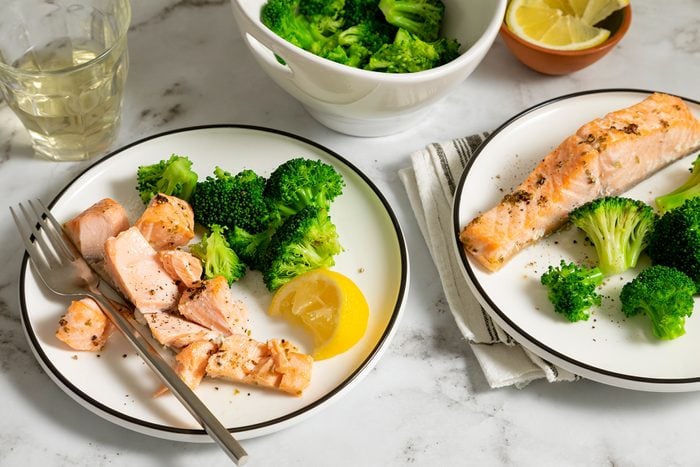
A lot of people have questions about cooking and serving salmon. Catherine Ward, Taste of Home Prep Kitchen Manager, and Sammi DiVito, Taste of Home Assistant Editor, have answered some common questions for us:
What do you serve with baked salmon?
A colorful platter of grilled vegetables is the perfect complement to salmon. Salmon also pairs well with a summer vegetable pasta and a glass of wine. Pour from the bottle of wine you used in this recipe, or pick a different kind from our guide to wine pairing with salmon.
What kind of salmon fillets should I buy to make baked salmon?
We advise buying salmon fillets with the skin still on. The skin acts as a barrier from heat, which helps keep the delicate meat nice and tender. It also makes for a tasty addition once it’s cooked. The only time we would recommend removing the skin from salmon is if you’re planning to poach or cook it en papillote, because those methods can result in soggy skin.
How can you tell when baked salmon is finished cooking?
When salmon is done cooking, it will feel a little firm when you press it with the back of a spatula, and it will flake easily with a fork. If you’re unsure, the safest way to tell if salmon is done cooking is to use a thermometer. The United States Department of Agriculture (USDA) recommends cooking salmon to an internal temperature of at least 145º.



















